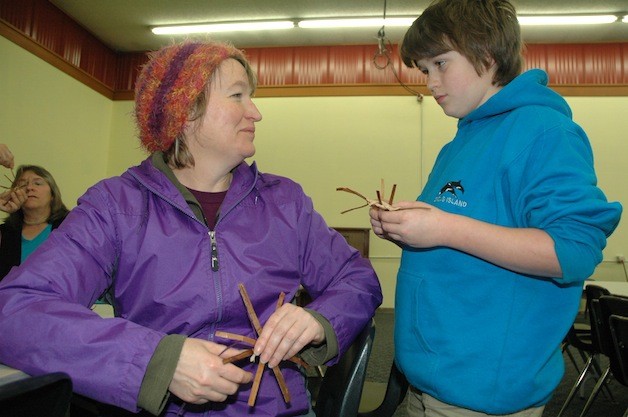MARYSVILLE — When Tulalip Tribes languages teacher Maria Martin read the story “Her First Basket” in both English and Lushootseed, she had some help from a 6-year-old she introduced as her little sister, K.T.
K.T. and Maria read aloud to roughly 25 people at the Red Curtain Arts Center Jan. 19, recounting the traditional tribal tale of how a little girl, who was isolated from the rest of her people due to her illness, was able to weave a cedar root basket that was the first to hold water without leaking.
The tale emphasizes the importance of not only persistence, as the girl has to weave several baskets before she succeeds at making one that’s water-tight, but also respecting the value of others, since the girl had believed that she couldn’t contribute anything of value to her people due to her illness.
Martin was invited to speak at Red Curtain by Scott Randall, president of the foundation. Martin had volunteered with Red Curtain before, and Randall approached her after seeing her deliver the opening prayer at last year’s Raising Hands banquet by the tribes.
“He wanted a way of bringing together the Marysville and Tulalip communities, and this activity came to mind,” Martin said, before she guided attendees through the process of making their own cedar medallions. “I tell this story to my own students. It’s easy to weave the medallions, and it keeps our language alive for the next generation.”
Randall agreed: “It’s great to be able to experience each other’s cultural heritage in an encouraging environment. It’s a really good turnout for our first event in conjunction with the tribes. We’d like to make it part of an ongoing campaign, like a monthly family night.”
Marysville’s Chandra Dunne was among the attendees who weaved medallions, along with her 9-year-old son, Brendan.
“It’s enriching for these kids to hear from Native Americans, in their own words,” Dunne said. “And of course, the artistic aspect of it crosses many cultures.”


